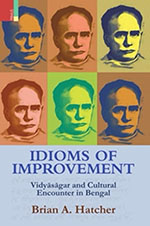26th September 2020 marked the 200th birth anniversary of Ishwarchandra Vidyasagar, one of the prominent figures in Bengal Renaissance. A prolific writer, his works are considered to be ‘classics’ in contemporary times. Vidyasagar’s writings are an important source to discern the evolution of ideas, thoughts, and practices in Bengal. A Bengali Brahmin and a Sanskrit scholar, known for his progressive thinking, his contribution as an educationist and a social reformer has been outstanding. When he was hardly thirty, Vidyasagar was appointed as the Principal of Calcutta’s Sanskrit College. In Bengal, his famous work, Varṇaparicay provides a strong base for learning Bengali. One’s childhood and study in Bengal and Bengali remains incomplete without Varṇaparicay. The work done on Vidyasagar has focused mostly on the various social reforms undertaken by him or a discussion about his great literary works.
Brian A Hatcher, a Professor and Packard Chair of Theology in the Department of Religion at Tufts University, an expert on modern Hinduism and colonial Bengal has taken up the task of putting forward an insightful study on the unexplored parts of Ishwarchandra Vidyasagar’s life in the context of the colonial and cultural discourse in Bengal. In 18th century Bengal (specifically in Calcutta), education was imparted in Bengali, Sanskrit, Arabic, and Persian along with English. During this period the English Company men were traders, and Indians were meant to run their administration smoothly. Thus, the education system in India played an important role in administration and governance. By the late 18th century, there were numerous pathshalas which were designed in a manner that was well-suited to the needs of the British. But educationists including Vidyasagar believed in maintaining a balance between English and vernacular education.

